Buoys Float On Top - But They Protect The Bottom

Within Florida Keys National Marine Sanctuary lies an extensive network of colorful floating markers known as buoys. Designed to allow boaters a quick method of securing their boat, this buoy network protects the living coral reef from anchor damage, and facilitates an enjoyable day on the water for thousands of recreational boaters annually. Over the last 30 years, Florida Keys National Marine Sanctuary has installed and maintained nearly 500 mooring buoys throughout the waters of the Florida Keys.
The history of the mooring buoy system is as colorful as the markers themselves: sanctuary biologist John Halas designed and implemented the first anchor and mooring buoy in Key Largo in 1981. This simple tool soon demonstrated a reduction in anchor damage to coral reefs and seagrass beds, and was quickly implemented throughout the Florida Keys and eventually, internationally.
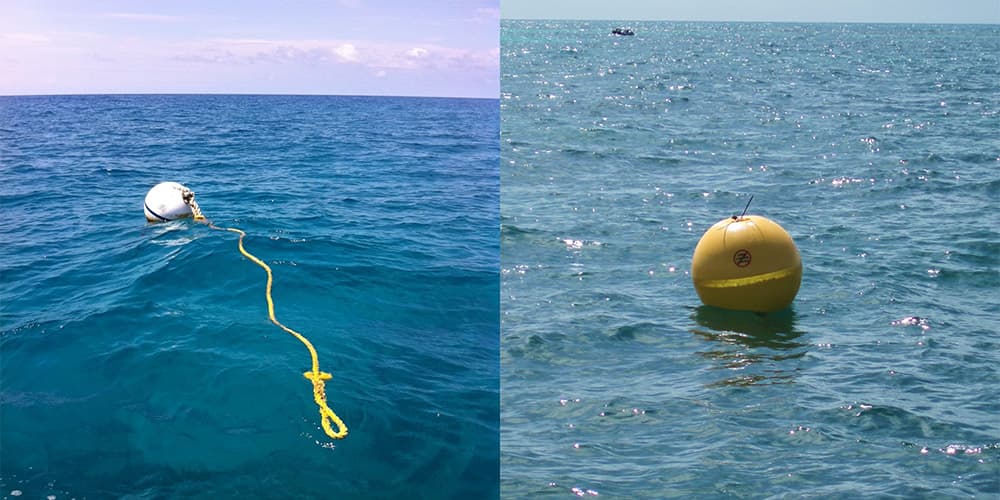
Today, mooring and marker buoy deployment has become a significant tool for reducing anchor damage in environmentally sensitive marine habitats and an asset in the management of marine protected areas. If each of the thousands of boaters enjoying the waters of the sanctuary were to drop an anchor instead of using a mooring buoy, one can only imagine what the landscape of the seafloor would look like!
Mooring buoys support sustainable use by preventing anchor damage on sensitive habitats especially coral formations, seagrass beds, and submerged archaeological resources, while facilitating public access for research, recreation, and tourism.
-Sarah Fangman, Superintendent, Florida Keys National Marine Sanctuary
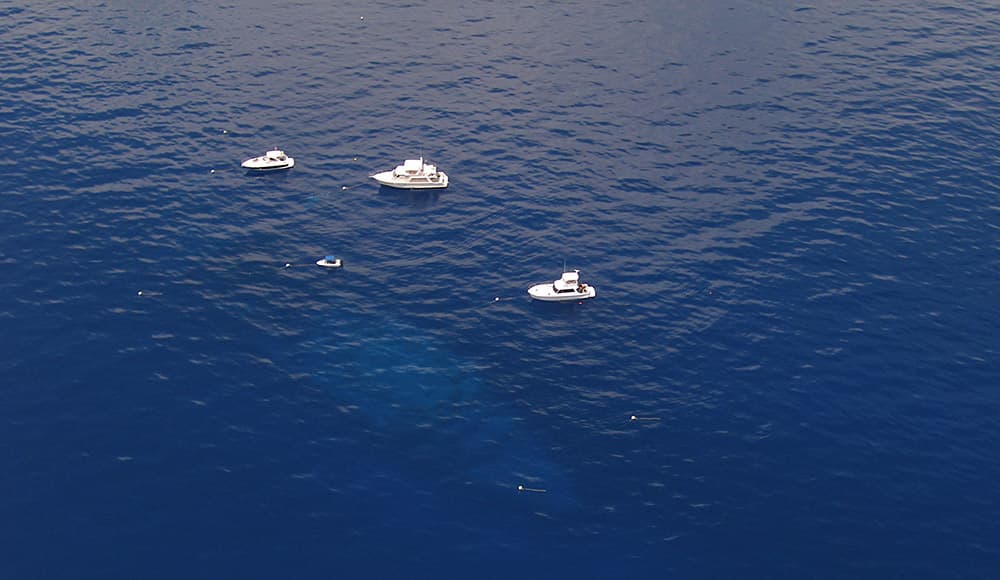
How do buoys stay in one spot?
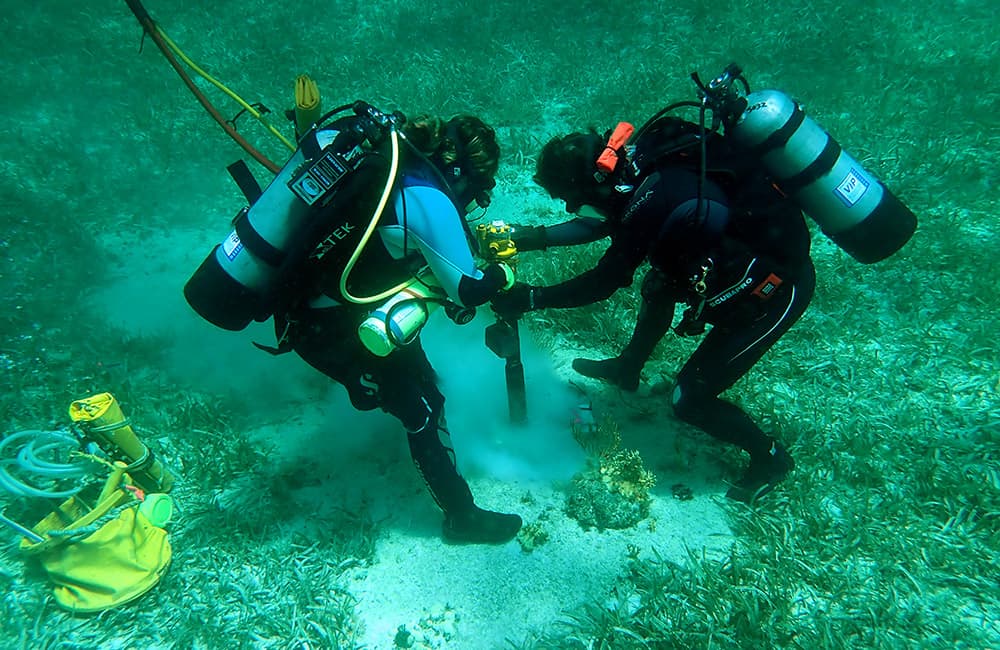
When you tie off your boat to a mooring, you may notice the buoy and the pickup line bobbing on the surface, but did you notice all of the hardware below the water? In order for the buoys (and your boat) to stay in one place, a complicated and robust anchor system lies below.
There are three types of anchors commonly used in the Florida Keys to secure the buoys to the seafloor: pin anchors, u-bolt anchors, and Manta Ray® anchors. Most of these anchors will be in use for up to 12 years before being replaced, though with proper use and maintenance, some have remained viable for almost 30 years!
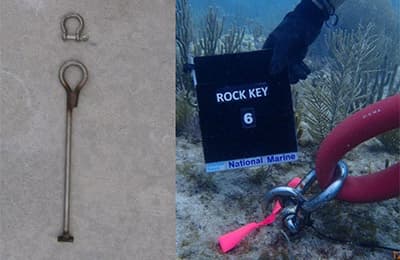

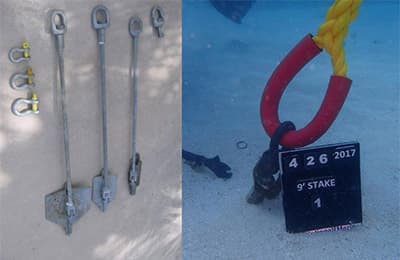
Since the establishment of the mooring buoy system, sanctuary staff have installed more than 1,500 anchors! Each installation requires five divers and multiple hours, that means the sanctuary mooring buoy team has spent almost 20,000 hours installing this vast network of buoys.
Buoys Need Care Too!
Florida Keys National Marine Sanctuary encompasses 3,800 square miles of protected marine resources, including fragile habitats such as coral and seagrass. Within this area, there are more than 800 buoys, including 490 Mooring buoys, 120 Sanctuary Preservation Area buoys, 190 Wildlife Management buoys, and various informational buoys spread throughout sanctuary waters. Imagine boating through this complex ecosystem without these buoys to guide you!

Each of these buoys has to be maintained, including installation, inspection, cleaning, and testing. The six members of the sanctuary buoy team strive to clean and service every buoy every quarter. On average, it takes 30 minutes to service each buoy, not including transportation to and from the site. Imagine that commute!
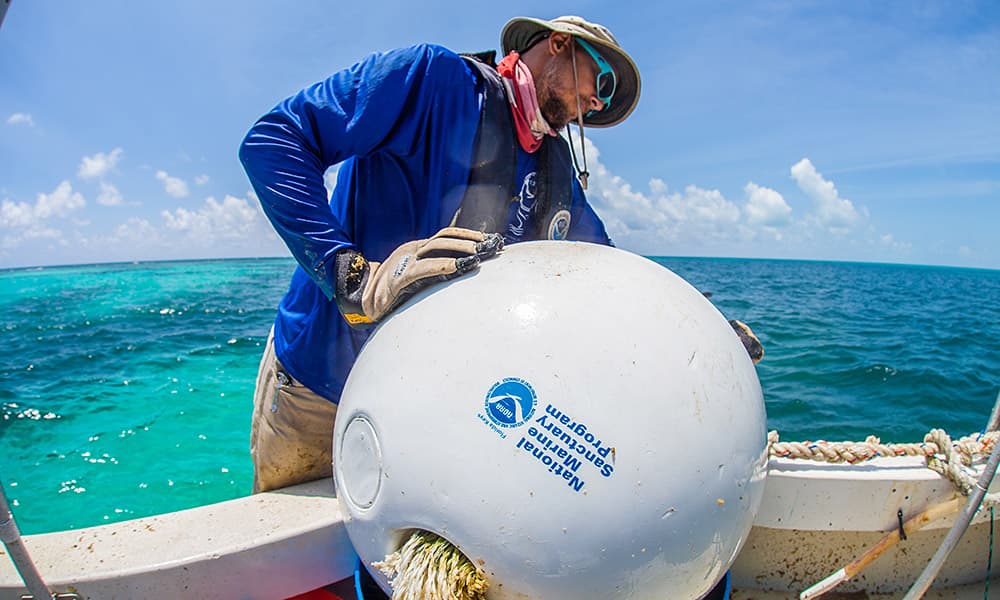
This expansive buoy system is maintained by two teams of three people, one team in Key Largo and one team in Key West. In addition, each year the whole team travels to the Dry Tortugas to maintain and rotate the buoys floating on the surface of the Tortugas Ecological Reserves.
The buoy team at Florida Keys National Marine Sanctuary has installed and maintained buoys as deep as 130 feet and as shallow as 2 feet. Recently, the team made history when they completed the working dive with an all-female crew to 97 feet to reinstall a mooring buoy on the bow of the U.S. Coast Guard Cutter Duane.

Buoys Around the World
The success of the Florida Keys National Marine Sanctuary buoy system has been celebrated around the globe for the innovative techniques to protect coral reef ecosystems. Throughout the last 30 years, members of the sanctuary team have traveled to countries such as China and Colombia to lend knowledge and expertise as those communities established their own buoy systems to protect marine resources. The anchor system, first installed by John Halas in 1981, is now used in more than 38 countries worldwide.

